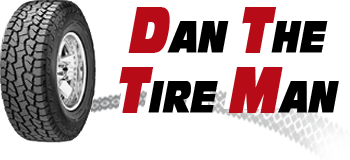
While a relatively simple concept, your tires have a great depth of variability and specifications. Written on their sidewall is a collection of numbers and letters, deciphering heaps of information. Many may wonder, what do the numbers on a tire mean? Below, we’ll outline each variable and how to read a tire.
Tire Type
The first set of letters on a tire will indicate the Tire Type. Simply put, the Tire Type letters showcase the tire’s classification.
- P - P stands for passenger vehicles and, as such, will be the most common letter found on consumer tires. This class will include sedans, SUVs, smaller pickups, and minivans.
- LT - LT tires are dedicated to light trucks. These wheels are better suited for the higher loads associated with vehicles designed to haul.
- ST - You’ll find ST written on wheels for trailers.
If you cannot find letters on the front of your tire, your tire may be euro-metric or European size.
Tire Width
The tire width is a three-digit number indicating the entire width of the tire in millimeters. This tire size is essential. If your new tires are too narrow or too wide, they will not fit on your rims.
Aspect Ratio
The aspect ratio is found after the tire width, separated by a slash mark. This number describes the height of the sidewall. The tire number is delivered as a percentage, with the height of the rim divided by its width.
A tire with an aspect ratio of 60 has a height of 60% of its width.
Shorter sidewalls typically offer greater handling performance, but the overall ride quality will be harsher. Finding the perfect tire size is essential for performance, efficiency, and comfort.
Construction Type
The construction type of the wheel describes the internal build of the tire. The construction will be represented by a single letter, either an “R” or “D.”
An “R” construction type represents a radial design. This internal construction is made from a series of steel cords extending from the beads and across the tread, forming a radial pattern. Radial construction allows for a strong sidewall and greater overall strength. Due to the benefits of this construction, radial tires are the most popular type of construction in tires sold today.
A tire with the letter “D” indicates a Bias or Diagonal construction. This type of construction involves layers of nylon placed at angles of 30-40 degrees. These layers are placed opposed, forming a crisscross diagonal pattern. This type of construction is typically found in machinery under high loads. As such, this construction type is rarely found in passenger vehicles.
Wheel Diameter
Derived in inches, the wheel diameter describes the distance across the opening of the inside of the tire. You cannot simply put a different tire size on the same rim. Even a one-inch increase in size will result in a drastic change in size. As such, you should consult an expert before changing your wheel diameter.
Load Index
You’ll find the Tire Load Index next to the tire size. Displayed as a number between 65 and 150, this number indicates the amount of weight that a tire can safely handle under standard pressure. Most passenger cars will have a Load Index tire number between 75 and 100.
The weight the wheel can handle is not immediately apparent from this number alone. A tire rating chart is required to see exactly how many pounds a specific tire can take.
When seeking new wheels, ensure the load index is higher or equal to your current set. Otherwise, your new tires may prematurely deteriorate.
Speed Index
After the Load Index, you’ll find the Tire Speed Rating. Ranging from ‘A’ to ‘Z,’ it represents the highest speed your tires can operate safely. The further down the alphabet, the higher the top speed your tires can safely operate at. Like the Load Index, a tire ratings chart is required to decipher its represented character correctly.
DOT Tire Regulations
Mandated by the Department of Transportation (DOT), DOT tire codes are featured less prominently on the sidewall but maintain a vital function. The DOT numbers found on a tire indicate the age of the tire, its manufacturer, and its respective plant.
With this newfound knowledge, you can now find great deals on cheap tires. Dan The Tire Man offers one of the largest selections with available tire financing.





